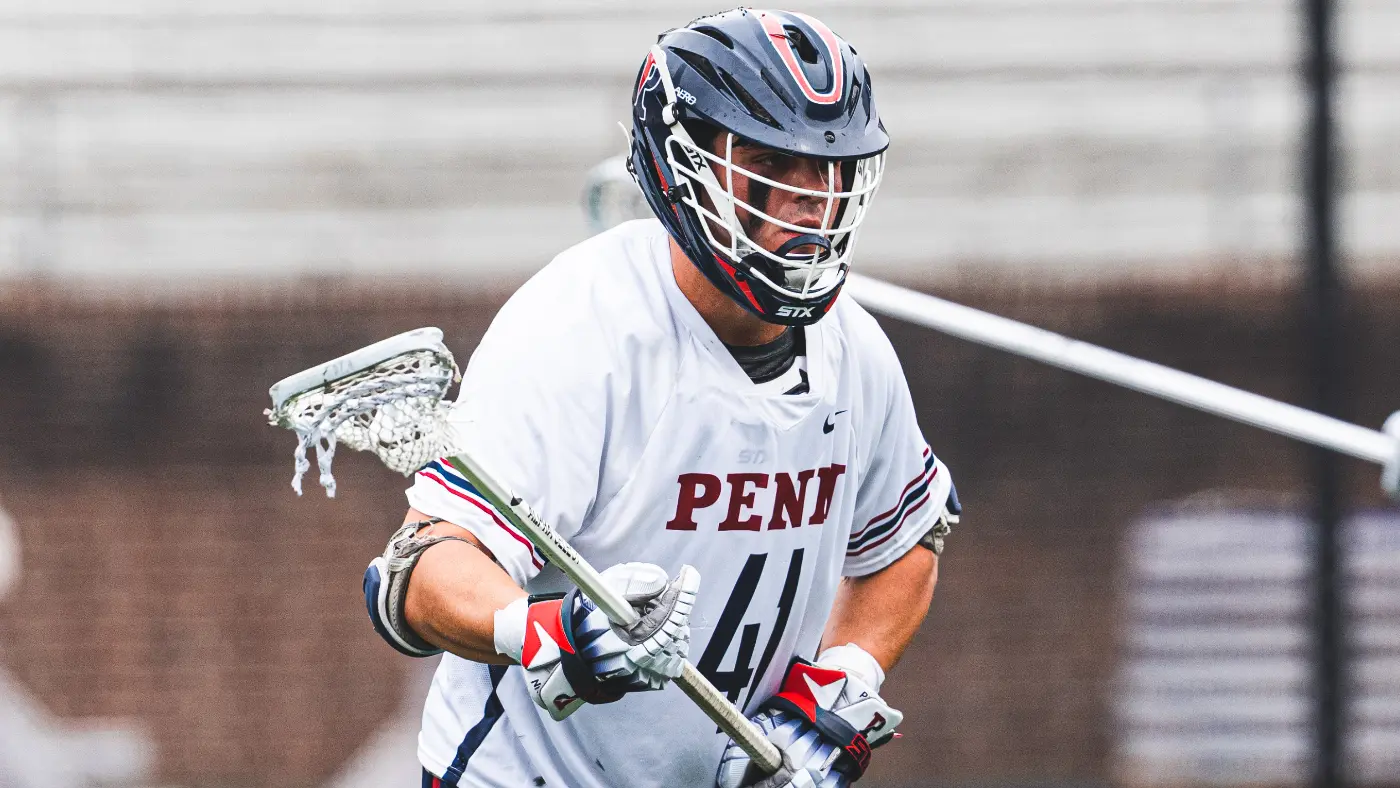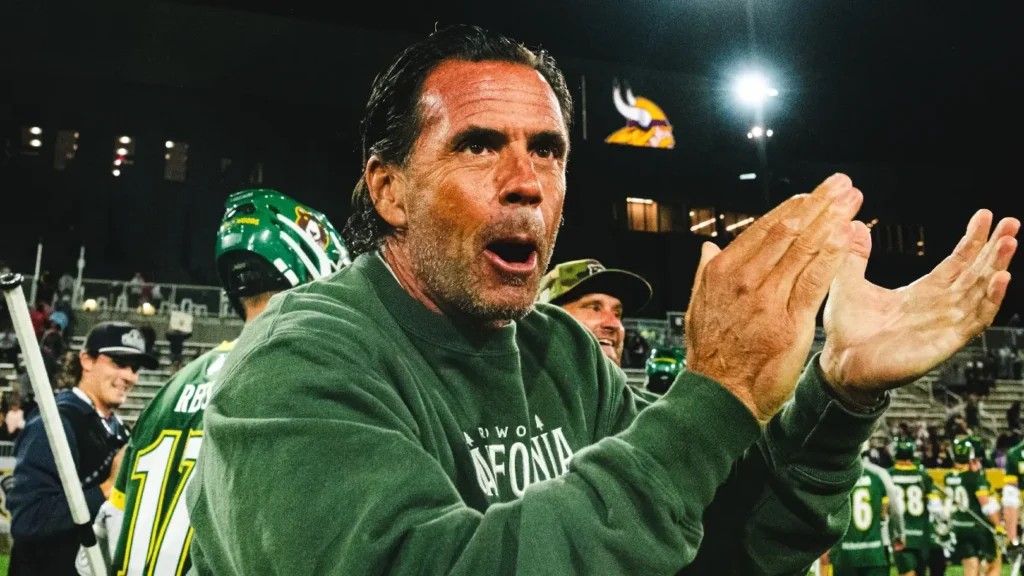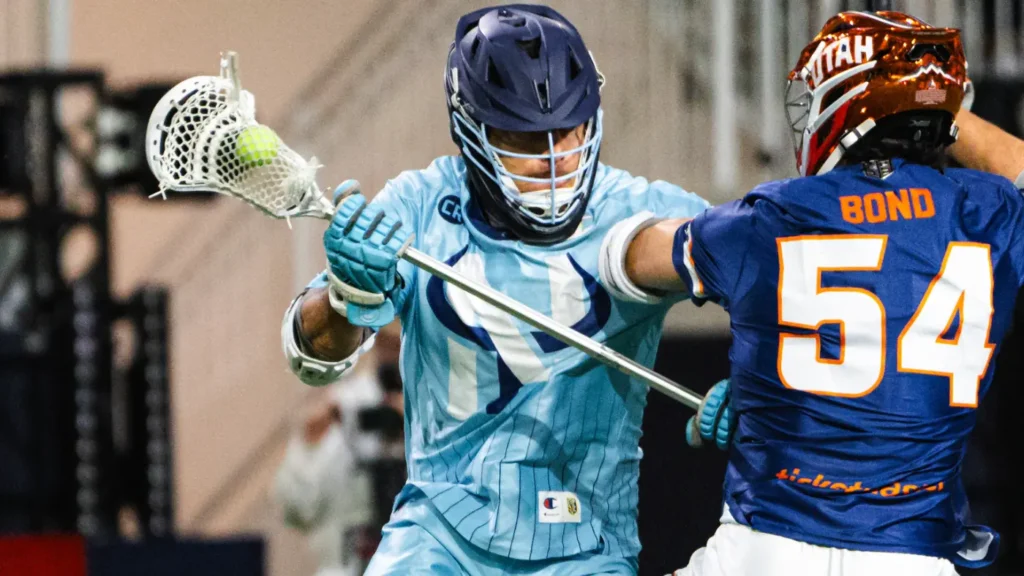
Film Study: How Brendan Lavelle locked down two No. 1 picks
By Zach Carey | May 21, 2025
Brendan Lavelle is a prototypical thumping lockdown defender. The Penn product is a burly, no-nonsense 6 feet and 210 pounds and has the hands of an elite left tackle. Once he gets his mitts and his stick on an opponent, he controls the matchup and is awfully hard to beat.
The Utah Archers trading up to add him with the fifth overall pick made the rich even richer. With veteran close defenders Graeme Hossack and Warren Jeffrey in the last few years of their careers, Utah views Lavelle as a building block for the defense’s future.
“He's going to be our foundation,” assistant coach Brian Kavanagh said.
Lavelle’s success against Brennan O’Neill and CJ Kirst, the two most dominant dodgers in college lacrosse the last two years, stood out to the Archers throughout the scouting process. The way he matched their physicality and contained each of them, even outright stripping O’Neill and Kirst at times, proved to the Archers that his step up to the professional level will be a smooth one.
“The dude wants to win mano a mano battles,” Archers head coach and general manager Chris Bates said. “He's ferocious in terms of his approach to covering the ball.”
Lavelle is calculated in his approaches to one-on-one matchups. He waits for his opponent to come to him so he can rely on his strength, winning inside the phone booth rather than matching feet in space.
Against O’Neill, boasting the requisite strength and technique to do that is rare. His combination of size and speed makes staying on his hip nearly impossible. Maybe two or three teams in the league have a defender who can both run and bump with last year's No. 1 overall pick.
Lavelle’s patient approach stymied O’Neill in 2024 and provided an answer for that otherworldly physicality. Instead of trying to match his feet and stay on his body at the same time, he waited for O’Neill to come to him on the lefty wing. When O’Neill tried to change direction on the wet grass, Lavelle stayed planted in his stance and used a light slap check and a little push to get O’Neill off-balance. He finished the possession by going over the head of the falling Duke attackman and winning the ball back for Penn.
Lavelle’s patience is a sign of his confidence and IQ in these matchups with some of the best dodgers on the planet. He sticks to his strengths and doesn’t overreact to any movement or interference.
Versus Kirst in the play below, Lavelle was similarly under control. He was calm in his approach to the perimeter and then reserved in reacting to Kirst’s split and then roll dodge. He relied on his massive forearms to hold Kirst at bay with his stick. Then, as they approached goal line extended, he pushed Kirst off his line and behind the goal.
When teams throw picks at him, Lavelle fights hard to get over them, using his brute force to push attackmen off their line so that he can fit through the space between the picker and the ball-carrier. His timing is typically impeccable as he gets his hands on his matchup just a split second before needing to navigate the pick so that his opponent doesn’t have an opportunity to reset his line.
Utah tends to be happy to switch big-little picks if the pole can’t fight through it. They’d rather switch and then slide early to the re-dodge to guard five-on-four on the backside rather than have to slide immediately after the pick and play four-on-three. Yet Lavelle’s ability to fight through picks could alleviate some of that pressure. He won’t be able to get through every one – the Archers will still switch more than most of the league. Lavelle provides another solution, though, because he’s capable of moving attackmen off a pick.
He did just that against O’Neill in the clip below. As Andrew McAdorey set the pick on Lavelle, the Penn defender got his hands on O’Neill at the last possible moment in order to create space for him to get over the pick. As Lavelle pushed him in the side (and a little bit in the back), O’Neill lost his footing on the slippery turf before Lavelle took the ball from him and sent it in the other direction.
Pushing O’Neill over – on wet grass or not – is an impressive feat. That strength, plus the technique Lavelle has, makes him a tough player to separate from without blinding speed.
He also doesn’t overreact to picks that wing dodgers like Kirst and O’Neill could look to refuse in order to attack underneath. Here, he remained square to Kirst as the attackman approached. When Kirst changed direction to his right, Lavelle planted hard with his right foot and quickly wiped his stick across his body to delay Kirst with a V-hold. He did that so quickly and so powerfully that he dislodged the ball from Kirst as he was finishing his face dodge.
Lavelle doesn’t have the footspeed to guard jitterbugs like Michael Sowers on a possession-to-possession basis. But that’s completely fine because he can own matchups against the bruisers like Kirst and O’Neill. Lavelle has held each of them scoreless in a game and, while that will hardly be the norm at the next level, it’s a sign that he can go toe-to-toe with the premier offensive talents in the PLL.
Lavelle projects to be another shutdown pole for defensive coordinator Tony Resch, joining Hossack, Jeffrey and Mason Woodward as high-level cover poles for the two-time reigning champs. Looking ahead, Woodward and Lavelle are primed to be the foundation of the Archers defense for years to come alongside goalie Brett Dobson and the club’s batch of quality short sticks.




